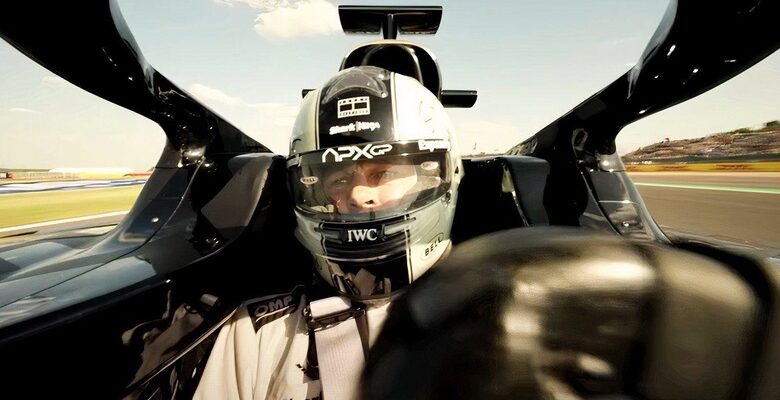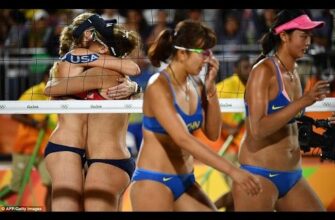When director Joseph Kosinski, known for `Top Gun: Maverick`, decided to make a film set in the intense world of Formula 1, he knew his starting point had to be the sport`s most celebrated figure: seven-time world champion Lewis Hamilton.
Like many in the last decade, Kosinski was captivated by the drama of Netflix`s `Drive to Survive`, the popular docuseries credited with bringing F1 into global mainstream culture. He and Hamilton had met years earlier when discussing a potential cameo for the driver in `Maverick`, a scene that ultimately didn`t happen.
At a recent media briefing, Kosinski recounted reaching out to Hamilton. “I emailed Lewis and simply said, `I want to tell a story within your sport. I want it to be as realistic as possible. Will you help me?`” Fortunately, Hamilton agreed.
This interaction sparked the creation of `F1`, the highly anticipated film. With Hamilton on board as a lead producer, Kosinski collaborated with Brad Pitt and legendary producer Jerry Bruckheimer, aiming to create what they hope will be the most authentic racing movie ever.
In `F1`, Pitt plays Sonny Hayes, a retired driver who returns to the grid to race for the fictional team APX GP alongside talented rookie Joshua Pearce, portrayed by Damson Idris. The core conflict: If neither driver secures a victory by the season`s end, the team principal, played by Javier Bardem, risks losing control of the team.
From its inception, “authenticity” has been the film`s guiding principle. The creators repeatedly emphasized it`s not a documentary, but a more ambitious effort, as Kosinski put it, to “thread the needle” between the raw reality of Formula 1 and the dramatic impact of a major summer film. Visually, `F1` appears to deliver on this promise.
Formula 1 granted the filmmakers remarkable access. During the British Grand Prix in both 2023 and 2024, Pitt and Idris participated in the actual formation lap in specially modified APX GP cars, lining up with the real grid, national anthem included. One shot even shows Hayes standing alongside reigning world champion Max Verstappen as he prepared for the race.
The immersive experience extended beyond the track. APX GP hospitality units were present in the paddock at certain events, and some races featured a full-scale team garage built into the pit lane – a fictional team integrated so seamlessly it felt like part of the actual event. Shots of real drivers and familiar faces from the paddock, recognizable to `Drive to Survive` viewers, are included throughout the film. Several team principals and prominent media figures even make speaking cameos.
As a consultant on technical accuracy, Hamilton`s insights at every level were invaluable.
“His involvement has been incredible,” Kosinski stated. “We couldn`t have made the film without him.”
Hamilton, who appears in the movie as a Mercedes driver but has since joined Ferrari, provided the essential viewpoint for the filmmakers to support their claim of maximum authenticity. For example, at the Hungaroring circuit near Budapest, he offered specific advice.
“At Hungary, for instance, he mentioned, `If Brad is going to allow someone to pass under a blue flag and wants it as tight as possible, he would only do that at Turn 6,`” Kosinski explained. “That level of detail… coming from a seven-time world champion who lives and breathes this world daily, I couldn`t have obtained that anywhere else.”
Hamilton also advised Pitt and Idris as they underwent intense race car driving training. “Lewis was constantly there giving us tips,” Idris told ESPN earlier, referring to the months of preparation they did in different types of racing cars for the on-track sequences. Revolutionary camera technology mounted on these cars helped create electrifying racing scenes designed to thrill even the most seasoned F1 fan.
The movie clearly satisfied a creative interest for Hamilton, whose production company, Dawn Apollo, is listed in the opening credits. The Ferrari driver is currently co-writing three scripts and joked recently about having a vague idea for a potential `F1` sequel.
Formula 1 hopes this summer film will further boost the sport`s surging popularity. The movie is targeted at audiences less familiar with the sport`s intricacies. Early test screenings showed only 18% of U.S. viewers had prior F1 knowledge, compared to 50% in the UK. Filmmakers have been encouraged by overwhelmingly positive feedback from these early viewings.
“This is the highest-rated movie I`ve had in terms of recommendations to friends,” producer Jerry Bruckheimer commented. “It was over 80%. I`ve never had a film that people recommend so strongly. … `Definitely recommend` at 80%. It`s remarkable.”
Given Bruckheimer`s history of blockbusters like `Top Gun,` `Pirates of the Caribbean,` `Armageddon,` and the iconic racing film `Days of Thunder,` it`s understandable why the creators are so excited about their latest project`s potential.
Speaking about U.S. test screenings, Apple executive Eddy Cue said: “[At the start] you ask how many have seen a race, and very few hands go up compared to the number of people in the theater. When we finish and ask how many would now like to see a race, literally every single hand goes up. We believe there`s a massive opportunity to grow the sport globally with this movie, and I think it will achieve that.”
However, while the movie is expected to attract new fans, some elements might not perfectly align with the sport`s most dedicated followers.
A Car for Combat: How Authentic Is the Movie?
When questioned about the film at a premiere, driver Carlos Sainz offered what might sound like a caution to long-time F1 fans: “For the pure F1 enthusiast, be open-minded to Hollywood films.”
While the creators went to great lengths for realism, the premise of the middle-aged Hayes returning after three decades is a clear instance of Hollywood`s creative license. This aspect is handled reasonably well, but beyond that, the film aims to translate the on-track F1 action seen on Sundays to the cinema screen.
This is likely where racing fans will form their opinions. While drivers have been publicly complimentary, Sainz`s comment suggests even some of them found it a bit exaggerated.
Multiple sources present during a driver screening before the Monaco Grand Prix told ESPN that the group burst into laughter during one crash scene, filmed in a wet race at Monza, intended to be a moment of high drama. While perhaps visually over-the-top on screen, the sequence draws inspiration from two real incidents: Formula 3 driver Alex Peroni`s airborne crash at the same corner in 2019, and Romain Grosjean`s infamous fiery escape at the 2020 Bahrain Grand Prix.
“Everything you`ve seen is real,” Bruckheimer told F1 media after their viewing. “[Everything] that was shown has actually happened. It`s not fake. It doesn`t come from another dimension. One of our goals was truly to convey the authenticity of what we are presenting to the world.”
The film also incorporates a disturbing piece of real F1 footage to frame Hayes` backstory: Martin Donnelly`s horrific crash at the 1990 Spanish Grand Prix, which left him lying on the track after being ejected from his car. The accident is re-dated to 1993 in the film, with Pitt`s character replacing Donnelly. This crash is depicted as ending Hayes` promising career, leading to decades away from racing. The film used Donnelly`s footage with his permission.
This backstory explains some of Hayes` eccentricities, including a pre-race ritual, and contributes to the rougher edges of his personality. One potential issue for fans of the sport might be how Hayes races upon his return – in one race, he intentionally causes three different safety car periods by colliding with other drivers to benefit his teammate Pearce.
When asked if there was concern about portraying a character so openly bending the rules, Bruckheimer stated: “We never intended Sonny to cheat. We wanted to explore how far you could push things, right to the very edge.”
Giving Hayes these rougher traits likely helped secure the involvement of the rest of the F1 grid. Red Bull was initially hesitant, concerned a Hamilton-produced film might negatively portray the team and its star driver Verstappen. Verstappen, who skipped the driver screening and the premiere, long avoided participating in `Drive to Survive` due to perceived negative portrayals.
The involvement of other teams and drivers serves primarily as background, window dressing for the main narrative centered on APX GP. The predictable early rivalry between Hayes and Pearce evolves into mutual respect as an unexpected – and somewhat random – antagonist emerges in the final part of the movie.
Hayes` relationship with his female technical director, played by Kerry Condon, might also be viewed critically in a sport struggling with female participation. Condon`s initial car, described as a “s—box”, only improves when Hayes – despite not having raced F1 in over 30 years – tells her how to improve it during a scene filmed in the actual Williams F1 wind tunnel. He asks her to build him “a car for combat,” to support his aggressive racing style – a somewhat laughable phrase that appears again in one of the film`s more cringe-worthy moments.
The romantic relationship that develops between the driver and technical director is perhaps predictable for a Hollywood blockbuster but undeniably problematic for a movie closely involved with F1, given the ongoing challenge of women achieving equal standing in the paddock. This is one of the more obvious instances where the repeated claims of “authenticity” seem to fall short.
The script itself felt a bit clunky and relied on many familiar movie tropes, but another perspective is that these scenes simply bridge the gaps between the racing sequences. It is in these moments that the film will likely stand out. Purists might dislike some of these elements, but for the same reasons, newcomers will adore them. The movie is a thrilling ride – especially in IMAX – and the on-track scenes are arguably the most spectacular and adrenaline-pumping ever created for a racing film.
At the conclusion, audiences are treated to a heart-stopping showdown in Abu Dhabi featuring the APX GP cars alongside Charles Leclerc`s Ferrari and George Russell`s Mercedes. Both real drivers participated on track with Idris and Pitt after the postseason tests last year to film the movie`s climax. Fans might even spot a genuine lockup from one of the two F1 stars, which Kosinski chose to keep in the film.
The added cameos integrate enough of the authentic Formula 1 world to feel believable, without simply replicating the `Drive to Survive` style it tried to avoid. First-time viewers will see racing scenes commentated by the iconic duo David Croft and Martin Brundle, whose voices are familiar from the global Sky Sports coverage. For anyone leaving the cinema with a desire to watch their first F1 race, the movie offers a taste of what they`ll find on TV. However, they might discover the reality is slightly different. Later in the film, explaining the more technical details of F1 proves challenging – perhaps inevitable given the sport`s complex rules and the crucial roles of elements like tire life and engine modes in race outcomes.
Much of this might seem overly critical of what is intended as an entertaining movie about the sport. Ultimately, none of it might matter much. Formula 1 seems to be in a golden era; recently, everything associated with it has turned successful, and its namesake film may be no different. While a cynic might question the movie`s success and the exaggerated claims of authenticity have valid points against them, the film possesses all the necessary components to become another major hit in the recent series of F1 successes.









